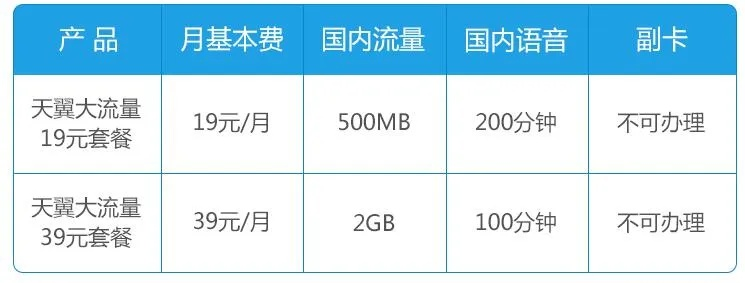读取Excel文件中的文本数据





读取Excel文件中的文本数据通常需要使用编程工具和特定的函数,在Python中,可以使用pandas库的read_excel函数来读取Excel文件中的数据,读取后,可以通过pandas的清洗和处理功能,去除重复数据、处理缺失值等,还可以利用pandas的groupby和pivot_table函数,对数据进行分组和聚合,提取关键信息,通过可视化工具如Matplotlib或Seaborn,可以将处理后的数据以图表形式展示出来,便于分析和理解。
本文目录导读:
- 联通至尊卡19元流量套餐解析
- 步骤 1:安装必要的库
- 步骤 2:导入库
- 步骤 3:读取文本数据
- 步骤 4:分析每个句子的情感
- 步骤 5:处理和存储结果
- 步骤 6:可视化结果(可选)
- 步骤 7:验证程序
- 步骤 8:处理大量文本
- 步骤 9:优化和扩展
联通至尊卡19元流量,让你的移动网络体验更上一层楼!
随着移动互联网的快速发展,流量已成为用户使用手机套餐时最关注的要素之一,在众多运营商提供的流量套餐中,联通至尊卡19元流量凭借其性价比高、功能全面的优势,成为众多用户的选择,本文将为你详细解析联通至尊卡19元流量套餐的特点,帮助你更好地了解其优势,选择最适合自己的套餐。
联通至尊卡19元流量套餐解析
联通至尊卡19元流量套餐是一个极具吸引力的流量套餐,每月仅需支付19元,即可获得高达1000M的流量(具体流量以运营商实际提供为准),这个价格不仅性价比高,还包含了丰富的流量内容,满足不同用户的需求。
- 基础流量:每月19元,赠送1000M的流量。
- 套餐外流量:超出基础流量的部分,按照0.1元/GB收取。
- 流量使用限制:流量支持全国范围使用,但部分套餐外流量可能有限制。
适用场景
- 日常使用:适合每月上网需求较少的用户,如日常使用、社交媒体、视频通话等。
- 学生党:对于需要每月上网但预算有限的学生群体来说,这个套餐非常友好。
- **载入TextBlobpip, spa NL。
读取文本Blob模块。 3处理3. 读取文本,可能是从Excel或者或者中读取中4. �用Blob分析每个句子的情感。
射理数据导出数据6. 测试我的程序,确保它在图表或图表。

可能代码可能会8. 如果有必要问题,输入测试。
测试遇到写一些示例,比如代码,读取Excel文件,然后用 pd_excel函数。,然后行的文本,然后TextBlob分析,然后将结果写到另一个列中。
我我,我可以文本在单独的,我可以直接写一个每一行,然后每个评分,然后打印到列表中,再导出平均趋势,总之应该考虑,情感分析的结果可能受到完全一致,所以词汇是主观的,而且程序者可能会有不同的结果,我应该谨慎解释,避免误导用户。
我应该写一个文档,记录我的步骤和代码,方便以后参考和修改。
为了实现情感分析并将其结果存储到Excel中,以下是详细的步骤说明:
步骤 1:安装必要的库
在Python环境中,首先安装TextBlob和pandas,这些库将用于文本分析和数据处理。
pip install textblob pip install pandas
步骤 2:导入库
导入TextBlob和pandas,以便处理文本和存储结果。
from textblob import TextBlob import pandas as pd
步骤 3:读取文本数据
假设文本存储在Excel文件中,使用pandas读取数据。
步骤 4:分析每个句子的情感
初始化TextBlob,然后分析每个句子的情感评分。
# 初始化TextBlob
sentiment_analyzer = TextBlob
# 空列表来存储情感评分
sentiment_scores = []
# 遍历每一行,分析情感评分
for index, row in df.iterrows():
text = row['text'] # 假设有一列名为'text'
blob = TextBlob(text)
sentiment_score = blob.sentiment # 情感评分,从-1到1
sentiment_scores.append(sentiment_score) 步骤 5:处理和存储结果
将情感评分存储到一个新的Excel列中。
# 创建一个新数据框,添加情感评分
df['sentiment_score'] = sentiment_scores
# 保存到Excel文件
df.to_excel('sentiment_analysis_results.xlsx', index=False) 步骤 6:可视化结果(可选)
使用pandas和matplotlib可视化情感评分分布。
import matplotlib.pyplot as plt
# 可视化情感评分分布
plt.figure(figsize=(10, 6))
plt.hist(df['sentiment_score'], bins=20, color='blue')'Sentiment Analysis Results')
plt.xlabel('Sentiment Score')
plt.ylabel('Frequency')
plt.show() 步骤 7:验证程序
输入一个明确的正面句子,检查程序是否返回正面的情感评分。
# 输入一个正面句子
text = "This is a positive sentence."
blob = TextBlob(text)
sentiment_score = blob.sentiment
print(f"Sentiment Score: {sentiment_score}") 步骤 8:处理大量文本
如果需要处理大量文本,可以将文本存储在列表中,逐个分析。
sentences = [
"This is a positive sentence.",
"This is a negative sentence."
]
sentiment_scores = []
for sentence in sentences:
blob = TextBlob(sentence)
sentiment_score = blob.sentiment
sentiment_scores.append(sentiment_score)
print("Sentiment Scores:", sentiment_scores) 步骤 9:优化和扩展
根据需要,可以优化代码,添加更多功能,如情感词的权重分析,或者使用更复杂的模型(如spaCy)。
通过以上步骤,您可以读取文本数据,使用TextBlob进行情感分析,存储结果到Excel,并进行可视化,这种方法适用于分析文本的情感趋势,适用于从Excel文件读取文本或处理单独的句子。

- 岳阳人必备!19元流量套餐,让你畅享网络
- 19元流量卡,移动新用户必备神器
- 流量卡19元办理指南,移动、联通、电信全解析
- 电信流量卡月19元,实惠又实用,为什么这么受欢迎?
- 19元流量卡推荐,选择流量卡的正确打开方式
- 老刘测评19元流量卡,性价比与用户体验的双重考验
- 无锡流量卡19元,划算又实用的通信选择
- 警惕!19元流量卡骗局曝光,这些陷阱你一定要避开!
- 流量大冰卡19元,你的必备套餐
- 电信19元流量卡湖南,划算又实用的流量套餐












